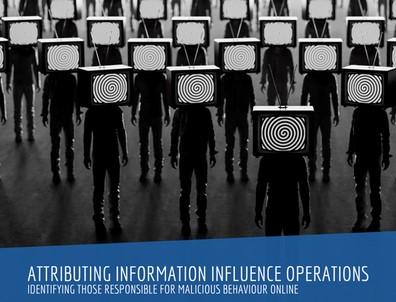Attributing Information Influence Operations: Identifying those Responsible for Malicious Behaviour Online
Attributing Information Influence Operations: Identifying those Responsible for Malicious Behaviour Online
Author(s): James Pamment, Victoria Smith
Subject(s): Media studies, Politics and communication, Behaviorism, Social Informatics, ICT Information and Communications Technologies
Published by: NATO Strategic Communications Centre of Excellence
Keywords: hybrid threats; online behaviour; cyber frameworks; Proprietary behavioural evidence; Open-source behavioural evidence; Classified behavioural evidence;
Summary/Abstract: By their nature hybrid threats create ambiguity. They are covert, obscuring intent and enabling plausible deniability. This makes identifying both who is behind them and their motives a significant challenge. Attribution must grapple with this challenge. It involves identifying the responsible actors, understanding what they are hoping to achieve and how they are seeking to accomplish it. Without a methodical and consistent approach underpinning attribution, planning and executing effective responses is far more challenging. The online environment has become a rich source of opportunities for a type of hybrid threat, referred to in this report as ‘Information Influence Operations’. These are deliberate attempts at deception, including interference in democratic processes, using disruptive and illegitimate means which are readily available to hostile actors. Those responsible for malicious behaviour online are motivated by a wide range of reasons. Organised, state-sponsored instruments of influence work across borders, furthering strategic aims by reaching directly into a targeted nation’s society and political structures. Others act for simpler reasons such as excitement, financial gain or self-actualisation. Working out who’s who means untangling a variety of evidence and indicators. Threats which occur in the digital domain pose a particular problem. By their very nature, online platforms are susceptible to manipulation, and even though responses such as takedowns are increasingly common, more work is needed to improve the process of identifying those responsible for malicious behaviour. A cat-and-mouse game has developed between hostile actors, governments, researchers and technology companies. The supporting concepts have not always kept pace with emerging threats.
- Print-ISBN-13: 978-9934-619-14-4
- Page Count: 41
- Publication Year: 2022
- Language: English
- eBook-PDF
- Table of Content
- Introduction

